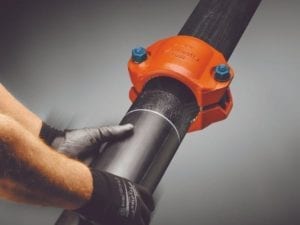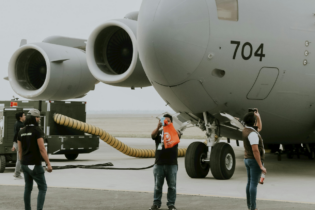As innovations arise, so do the replacements of older technologies.
One such product is High Density Polyethylene piping, or HDPE as it is commonly referred to, which has infiltrated a number of industries such as mining and construction, by presenting an improved alternative to the aging concrete or steel piping solutions of the past. The composition of the material presents a product which displays impeccable resistance to chemicals, as well as excellent corrosion resistance and low weight properties that have seen it become the preferred choice of modern-era engineers. However, as with all pipe applications, sections require joining; and as many can bear testament to, the orthodox welding, threading, fusing, and soldering methods pose not only delays to project completion, but add to the safety risks in addition to increased financial implications as specialised workmanship is required for the installation. For years, butt fusion and electrofusion have been considered the top joining methods for HDPE piping.People commonly overestimate the performance advantages of fusion and until now, it has been widely accepted as the easiest, most efficient method for joining HDPE pipe. As such, Victaulic, the global leading innovator in mechanical pipe joining solutions and services, has continued to transform various industries by offering mechanical joints for HDPE piping featuring a strong and durable solution that provides ease of installation amongst its many advantages.
As mechanical joints are widely embraced in metallic piping applications, many highlight concerns surrounding the performance and reliability factors of mechanical joints in relation to HDPE piping. And while the majority of these myths are simply fictitious, these myths still persist across various industries, leading practitioners to believe that mechanical joining is not a suitable method to consider.The various myths
- The first myth is that HDPE piping with mechanical joints does not perform optimally when buried. In fact, Victaulic’s mechanical joints have been specifically designed with buried applications in mind. Victaulic’s products have been fabricated out of durable ductile iron housings and fluoropolymer-coated hardware, ensuring that Victaulic couplings are protected against an array of conditions. If additional protection is required, Victaulic offers supplementary coating and wrap options should the need arise.
- The second myth surrounds the concern that fusing provides stronger joints, and while fusion has traditionally been seen as the choice method of joining, recent data and studies may prove otherwise. Fused joints are susceptible to a number of variables such as the skill of the technician, surface contamination, and hot or cold conditions — all impact the overall integrity of the joint. Further, there are currently no visual or non-destructive manners in which to inspect the quality of the joint.
- Thirdly, many consider that grooving pipe ends creates a point of weakness, however Victaulic solutions have been designed specifically to allow the coupling keys to engage the groove profile, and therefore providing a fully restrained joint up to the working pressure of the pipe. Victaulic’s grooving tools, and training on their operation, ensures that the grooves are tightly controlled within the design specifications.Moreover, the joint is designed so that the groove is filled with the keys on the coupling’s metal housing. Essentially, the reduced pipe wall thickness at the groove is reinforced by a restrained ring of iron – a much stronger material than HDPE to begin with. This design adds to the strength of the joint, rather than detracting from it.
- Another myth is that the method of fusing remains a faster alternative to joining; and although many may believe this, the reality is that fusing HDPE is a slow process even in ideal conditions. Variables ranging from weather conditions, the skill of installers, and the quality of their machinery impact the success of the joint.Victaulic couplings ensure an installation time of 10 times faster than compared to fusing, and with only simple hand tools, workers will be able to install the joint without expensive fusing equipment, expertise, power sources, and certified fusion installers. The installation of the joint is not determined by weather conditions, and offers the ideal solution to joints in tighter spaces, as no complex equipment is required for the installation.
- Finally, many believe that mechanical coupling solutions are expensive alternatives. As mechanical couplings are faster and easier to install, and require little maintenance, projects are able to save on labour and skilled installation costs which will ultimately negate the cost of the couplings.








